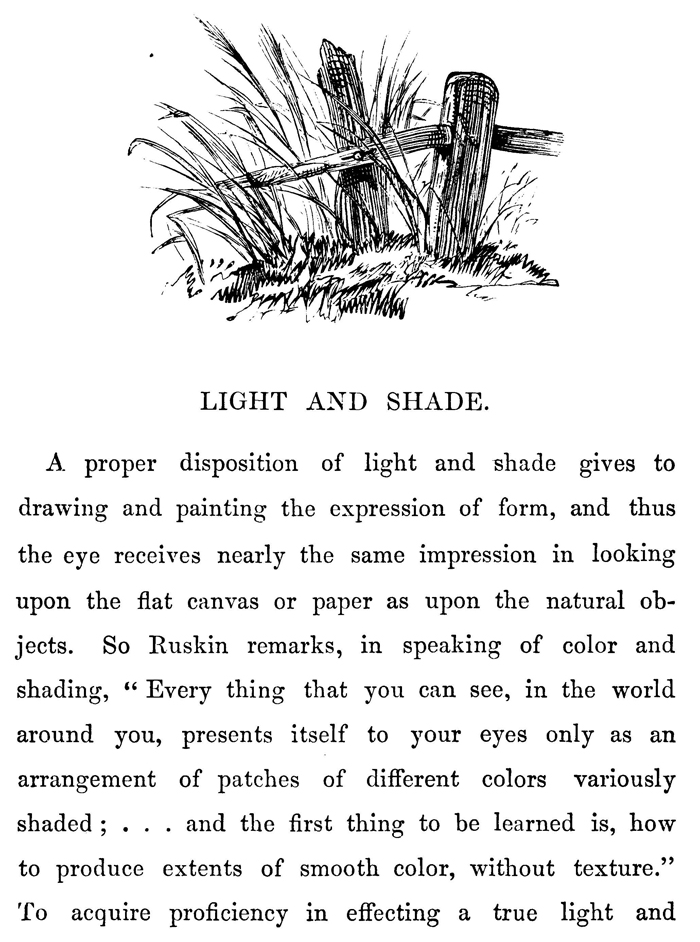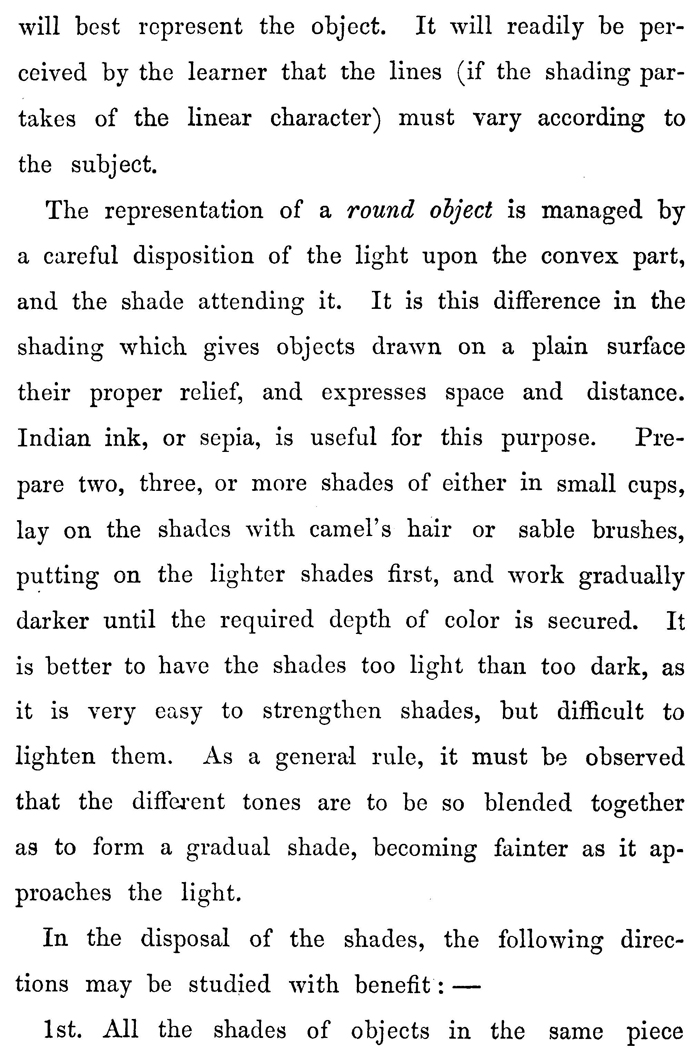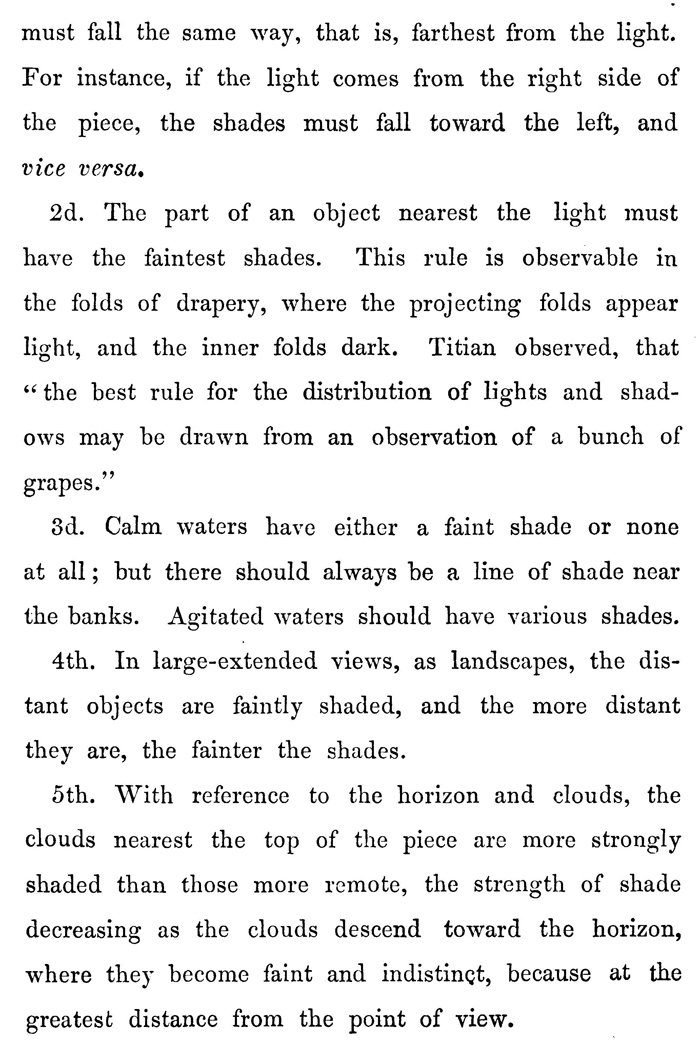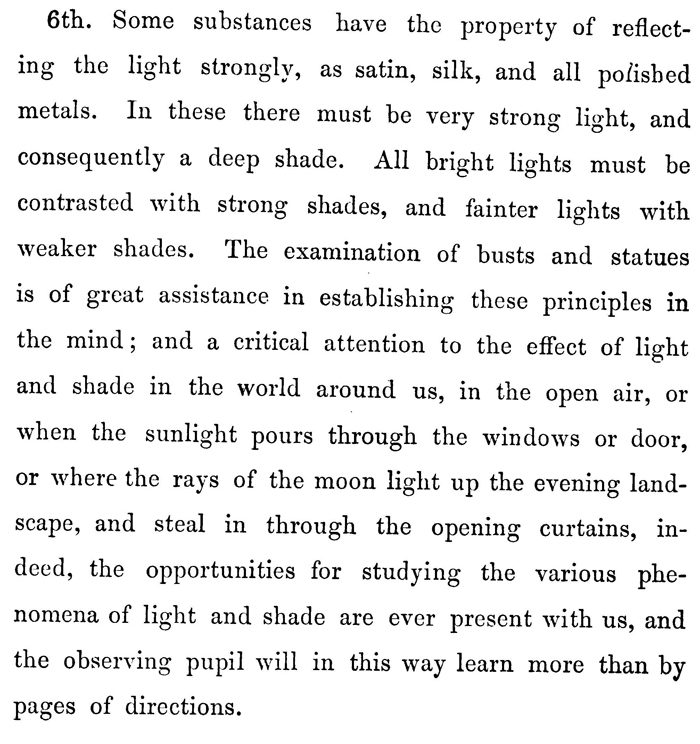Home > Directory of Drawing Lessons > How to Improve Your Drawings > Drawing Lights and Shadows >Drawing Lights & Shadows
Drawing Lights and Shadows with Different Variety of Lines, Hatching & Cross-Hatching Techniques
|
|
LIGHT AND SHADE.
A proper disposition of light and shade gives to drawing and painting the expression of form, and thus the eye receives nearly the same impression in looking upon the flat canvas or paper as upon the natural objects. So Ruskin remarks, in speaking of color and shading, " Every thing that you can see, in the world around you, presents itself to your eyes only as an arrangement of patches of different colors variously shaded ; . . . and the first thing to be learned is, how to produce extents of smooth color, without texture." To acquire proficiency in effecting a true light and
The variety of form and direction in nature can only be imitated by a corresponding variety in the lines and touches used in their delineation, expressing as nearly as possible the exact form and character of the original. For instance, an even, smooth surface requires an even-ness and regularity in the lines, approaching as nearly as possible to an unbroken surface ; and if it is desired to imitate a broken or uneven surface, recourse must be had to broken, curved, or uneven lines, such as will best represent the object. It will readily be perceived by the learner that the lines (if the shading partakes of the linear character) must vary according to the subject.
The representation of a round object is managed by a careful disposition of the light upon the convex part, and the shade attending it. It is this difference in the shading which gives objects drawn on a plain surface their proper relief, and expresses space and distance. Indian ink, or sepia, is useful for this purpose. Prepare two, three, or more shades of either in small cups, lay on the shades with camel's hair or sable brushes, putting on the lighter shades first, and work gradually darker until the required depth of color is secured. It is better to have the shades too light than too dark, as it is very easy to strengthen shades, but difficult to lighten them. As a general rule, it must be observed that the different tones are to be so blended together as to form a gradual shade, becoming fainter as it approaches the light.
In the disposal of the shades, the following directions may be studied with benefit : —
1st. All the shades of objects in the same piece
must fall the same way, that is, farthest from the light. For instance, if the light comes from the right side of the piece, the shades must fall toward the left, and vice versa. |
Privacy Policy ...... Contact Us









